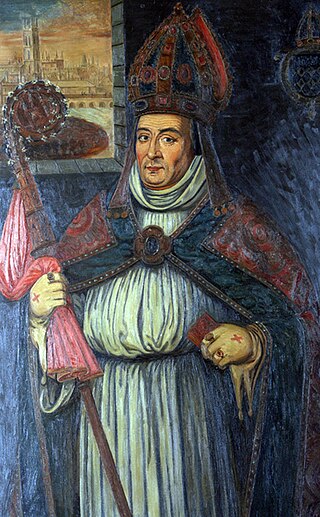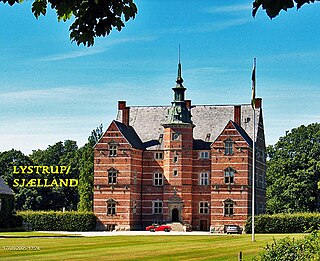Related Research Articles

Pope Innocent VIII, born Giovanni Battista Cybo, was head of the Catholic Church and ruler of the Papal States from 29 August 1484 to his death in July 1492. Son of the viceroy of Naples, Battista spent his early years at the Neapolitan court. He became a priest in the retinue of Cardinal Calandrini, half-brother to Pope Nicholas V (1447–55), Bishop of Savona under Pope Paul II, and with the support of Cardinal Giuliano Della Rovere. After intense politicking by Della Rovere, Cibo was elected pope in 1484. King Ferdinand I of Naples had supported Cybo's competitor, Rodrigo Borgia. The following year, Pope Innocent supported the barons in their failed revolt.

Elizabeth Woodville, later known as Dame Elizabeth Grey, was Queen of England from her marriage to King Edward IV on 1 May 1464 until Edward was deposed on 3 October 1470, and again from Edward's resumption of the throne on 11 April 1471 until his death on 9 April 1483.

Thomas Bourchier was a medieval English cardinal, Archbishop of Canterbury, and Lord Chancellor of England.

William Waynflete, born William Patten, was Provost of Eton College (1442–1447), Bishop of Winchester (1447–1486) and Lord Chancellor of England (1456–1460). He founded Magdalen College, Oxford and three subsidiary schools, namely Magdalen College School in Oxford, Magdalen College School, Brackley in Northamptonshire and Wainfleet All Saints in Lincolnshire.

Ascanio Maria Sforza Visconti was an Italian Cardinal of the Catholic Church. Generally known as a skilled diplomat who played a major role in the election of Rodrigo Borgia as Pope Alexander VI, Sforza served as Vice-Chancellor of the Holy Roman Church from 1492 until 1505.

The former Diocese of Børglum was a Roman Catholic diocese in Northern Jutland, Denmark. It has also been referred to as the Diocese of Vestervig or the Bishopric of Vendsyssel. The diocese included Vendsyssel, Hanherred, Thy, and Mors.

Ford Grey, 1st Earl of Tankerville, PC was an English peer and politician.

Ove Gjedde was a Danish nobleman and Admiral of the Realm (Rigsadmiral). He established the Danish colony at Tharangambadi and constructed Fort Dansborg as the base for Danish settlement. He was a member of the interim government that followed the death of King Christian IV and which imposed restrictions (Haandfæstning) on his successor King Frederick III.

Burrishoole Friary was a Dominican friary in County Mayo, Ireland. Its ruin is a National Monument.
Events from the 1530s in Denmark.

Christoffer Knudsson Urne of Årsmarke was a Danish statesman and landholder. He served as Royal Treasurer from 1617 to 1627, Governor-General of Norway from 1629 to 1642 and as Chancellor of the Realm from 1646.

Jørgen Kaas was a Danish colonel, lord of the fiefdom Lister in Norway, and owner of the Hastrup and Østergaard estates in Denmark. A member of the younger Kaas family, one of Denmark's preeminent families of ancient high nobility, he is notable as a war hero during the March across the Belts when he led the defense of Fyn against the Swedes and fell in battle. King Charles X Gustav of Sweden accompanied his body on foot in honour of his bravery. He was given the fief of Lister by King Christian IV on 30 December 1648, after he had sold his estate Østergaard to the King's son Ulrik Christian Gyldenløve. He never resided in Norway, and the fief was administered by the fiefholder of Nedenes.

Lystrup is a manor house and estate located two kilometres west of Faxe, in Faxe Municipality, Denmark. The Dutch Renaissance style main building was built in 1579 for Chancellor of the Realm Eiler Grubbe (1532–1585). In the late 1600s, the main building was rebuilt and a new south wing was erected.
Tryggevælde is a manor house and estate in Faxe Municipality, some fifty kilometres southwest of Copenhagen, Denmark. The estate was a royal fief until the middle of the 18th century and was later owned by the Moltke family at Bregentved from 1751 to 1937. The current main building is from 1849. The Tryggevælde Runestone was from some time during the 16th century to 1810 located in the central courtyard of the old main building.
Alslevgaard is a manor house and estate located at Karise, Faxe Municipality, Denmark. The estate was for 300 years owned by the Grubbe family and has for long periods of time shared ownership with Tryggevælde. Both estates belonged to the Countship of Bregentved from 1751 to 1922 under grevskabet Bregentved, der blev oprettet af A. G. Moltke. The old main building was demolished in the middle of the 18th century and a new main building was not built until 1902. The oldest parts of the farm buildings (avlsgården) dates from circa 1775.
Gerdrup, formerly Gjerup, is a manor house and estate located three kilometres north of Skælskør, Slagelse Municipality, Denmark. The estate was from 1760 to 1919 owned by members of the Qvistgaard family and has since then been owned by the Fabricius family. The current main building is from 1866. It is now operated as a venue for meetings, parties and other events.
Harrestedgård, also known as Harrested Manor, is a manor house and estate located 1+ kilometres northwest of Næstved, Denmark. The main building, which partly dates from the Middle Ages and partly from the 1840s, was listed on the Danish registry of protected buildings and places in 1918.
Peder Bild was a Danish landowner and lensmann. He owned Sonnerupgaard and was lensmann of a number of fiefs in Denmark and Norway.

Mads Eriksen Bølle was a Danish privy councillor, landowner and fiefholder. He was during the Count's Feud in opposition to Christian III and the introduction of Protestantism but was after the Reformation nonetheless allowed to keep his fiefs.

Johan Jepsen Ravensberg was a Danish clergyman and statesman. He served as King's Chancellor from 1486 to 1493 and as Bishop of Roskilde from 1500 to 1512.
References
- ↑ "Peter Evert Grubbe" (in Danish). Dansk Biografisk Leksikon . Retrieved 20 February 2019.